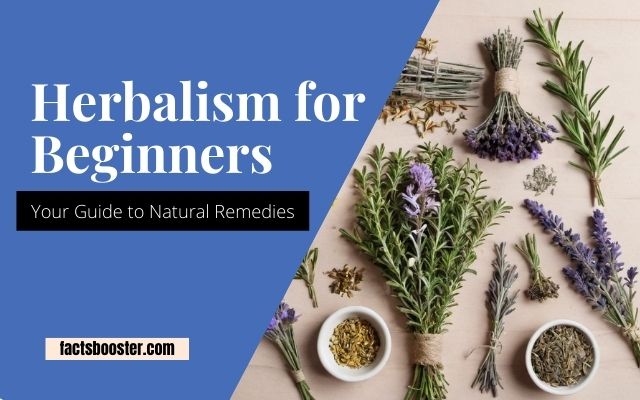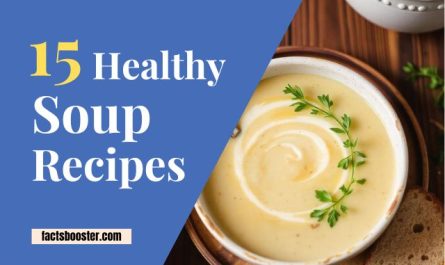Diving into the world of herbalism launches you on a path toward natural healing and holistic health. This guide to herbalism for beginners explores plant medicine, a practice steeped in ancient wisdom yet perfectly suited for today’s wellness journey. Embrace the vibrant realm of alternative remedies and DIY healing as an enriching step towards wellness.
Key Takeaways:
- Understand herbalism’s rich history and its evolution into contemporary health practices.
- Discover practical steps for starting your journey, including selecting herbs and creating remedies.
- Learn how to integrate herbalism into daily life, enhancing wellness and relaxation.

History of Herbalism
Herbalism has woven its roots through the tapestry of human history, revealing a universal truth: plants possess profound healing powers. From the ancient Greeks to Chinese dynasties, every culture has harnessed the magic of plant medicine.
Key figures like Hippocrates and Paracelsus illuminated herbalism’s path, championing its integration into holistic health practices. This journey from past to present shows us that herbalism, with its blend of natural healing and wisdom, isn’t just an alternative remedy but a vital component of wellness journeys worldwide.
As we embrace these traditions today, we continue a legacy of wellness that has been flourishing for centuries.
Herbalism For Beginners: How to Start
Diving into herbalism might feel overwhelming, but have no fear. Selection of starter herbs will be your initial step. Opt for those revered for their versatility and gentleness, such as chamomile or peppermint.
Next, you’ll want to focus on building an herbal library. Seek titles authored by respected herbalists to deepen your understanding. Finally, acquiring the necessary tools for herbal crafting, like mortars and pestles, is crucial.
Remember, this journey into natural healing and plant medicine isn’t just about remedies; it’s a holistic path to wellness. Embrace it with curiosity and respect for the environment, ensuring sustainability remains a priority.
To Learn More: 10 Must-have Herbs for Health
Common Herbal Remedies
You’ve ventured into the world of herbalism, eager to explore natural healing and wellness through plant medicine. A selection of widely cherished herbs stands ready to guide your wellness journey.
Lavender, renowned for its soothing aroma, has been a cornerstone in stress relief and sleep enhancement practices.
The application of Peppermint spans from easing digestive discomforts to invigorating the senses.
For those battling colds or flu, Echinacea emerges as a natural immune booster, strengthening the body’s defenses. As you embark on this path of holistic health and alternative remedies, remember to approach each herb with curiosity.
Experimentation opens doors to discovering the potent benefits of each plant, aligning them with your health objectives. Nevertheless, heed the importance of moderation and awareness of any potential sensitivities or allergies to ensure a safe and enriching herbal education journey.
Read more:
Growing Your Herbs
Embarking on the journey of growing your herbs offers a multitude of rewards, especially for beginners in the realm of herbalism. I found that starting an herb garden, even in the smallest of urban spaces, isn’t as daunting as it might seem.
You will discover that nurturing these plants from seed to harvest not only enriches your holistic health arsenal but also strengthens your bond with nature’s wonders.
Learning to cultivate herbs for DIY remedies, natural healing, and alternative remedies brings a profound sense of fulfillment and empowerment. This hands-on approach to plant medicine assures you of the purity and sustainability of your wellness journey.
Indeed, the act of growing and using your herbs is a transformative experience that roots you deeper into the ancient practices of herbal education.
Incorporating Herbalism into Your Daily Life
Herbalism beckons you to a world where plants serve beyond mere decoration. It’s a journey where every leaf and root can shape your path to wellness.
You’ve learned how herbs offer alternatives to conventional remedies, blending ancient wisdom with your quest for holistic health. DIY remedies, once a craft of the seasoned herbalist, now unfold before you as an accessible book of secrets. Let’s delve into the everyday magic of incorporating herbs into your lifestyle.
Imagine infusing your meals with more than just flavor but a dose of health. Culinary herbs not only tantalize your taste buds; they weave the power of plant medicine into your daily fare.
Sipping on herbal teas becomes a ritual, each blends a step closer to balancing your body and mind. Embrace the art of creating your herbal skincare, transforming routines into rejuvenating rituals.
As you explore, remember, that the roots of herbal education run deep. Keep curiosity your guide, allowing each herb to reveal its story and its contribution to your journey.
Incorporate herbs into cooking
You’ve embarked on a journey of natural healing and holistic health, where plant medicine plays a pivotal role. Culinary herbs, the gems of alternative remedies, are a gateway to this wellness journey.
They not only elevate the taste of our meals but also contribute to our health. For beginners in herbalism, the kitchen becomes an experimental lab of DIY remedies.
Starting with simple herbs like basil or rosemary can ignite a passion for herbal education. Incorporate them into sauces or teas. Each dish you prepare allows for a creative touch, guided by your palate’s preference.
As you explore, remember, that the path of herbalism is enriched with learning and discovery. Embrace the variety it offers, and let your culinary creations be a testament to the natural healing powers of herbs.
Making Herbal Teas and Infusions
You’ve decided to embark on your wellness journey with the art of herbalism, focusing on natural healing through DIY remedies. Initially, you might find yourself overwhelmed.
Yet, mastering herbal teas and infusions can become an integral part of your holistic health routine. By selecting the right plant medicine, you will unlock the door to alternative remedies that have been trusted for centuries.
To begin, choose herbs that align with your health goals. Lavender and chamomile, for instance, are excellent for relaxation and stress relief. Boiling water poured over these dried herbs, left to steep, and then strained, creates an infusion that soothes the mind and body.
Starting with simple recipes allows you to appreciate the nuances of each herb. Embrace this journey into herbal education as an empowering aspect of your life, reinforcing the bond between body and nature.
Herbal Skincare and Beauty Recipes
Diving into the world of herbalism invites you to explore the realm of DIY remedies for skin and hair care. The allure of this practice lies in its foundation on natural healing and the use of plant medicine, ensuring everything you apply is free from harsh chemicals.
For those embarking on their wellness journey, these beginner-friendly recipes offer a holistic approach to beauty. Imagine crafting your skincare products, infused with the goodness of alternative remedies known for their beneficial properties.
Such projects not only introduce you to the basics of herbal education but also accentuate your daily regimen with elements of holistic health. For your first venture, consider simple concoctions like chamomile facial toner or rosemary hair rinse.
They exemplify that incorporating herbalism into your lifestyle can be both empowering and gratifying.
Using Herbs for Relaxation and Stress Relief
Have you felt the tug of stress teasing at the edges of your day? You’re not alone. Exploring herbalism for beginners, you’ll find a trove of natural healing options.
Many turn to plant medicine as a holistic health approach to calm the mind and ease tension. Herbal education introduces us to alternative remedies like chamomile or lavender, renowned for their soothing properties.
Imagine winding down after a long day with a cup of herbal tea; it’s a simple yet effective DIY remedy for peace. Dive into the world of wellness journeys with these herbs.
Lavender, for instance, has been used across cultures for its ability to induce relaxation. (1)
Chamomile, on the other hand, can help soothe the nervous system, making it perfect for those hectic days. (2)
Integrating these into your daily life, whether through teas, infusions, or even a warm bath, can offer a sanctuary of calm. It’s an invitation to slow down, breathe, and let the natural world provide its support.
Conclusion
Embracing herbalism enriches your life with natural healing, wellness journey enhancement, and holistic health strategies. It ignites a path of DIY remedies, alternative remedies, and lifelong herbal education. Dive deeper into the world of plant medicine and discover its transformative power on your holistic health journey.


